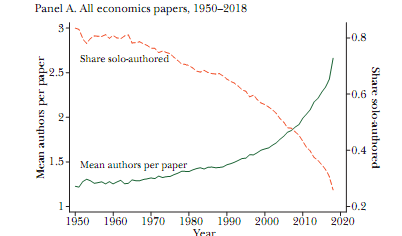
After doing a lot of reformatting to meet a journal page limit (which, TBC, I support), I started to wonder - why don't journals impose limits on the referee reports that lead to these long papers? E.g., 1-2 pages; or alternatively, 3-5 (choose N) substantive suggested revisions
Seems like this could help with a lot of problems - long review times, tedious revisions, bloated papers that are hard to read, indigestible appendices, etc. Hard to enforce, but editors could suggest that material beyond the limit would be ignored.
Plus, I suspect many referees would be very happy for explicit guidance that allows for coordination, since (many of us) are concerned about the perception of submitting an un-thorough or low-quality report relative to others. . .
AER-Insights I believe requests a report of around 1 pg. WBER also had some length guidance (I don't recall what it was). I'm not sure about other journals / editors, but seems like a change to consider?
• • •
Missing some Tweet in this thread? You can try to
force a refresh





